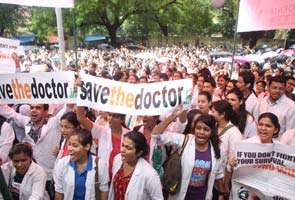Hyderabad, Chennai and Mumbai is much lower than an entry level call center employee. At most cities this income cannot support a lower middle class living.
Even when we talk about employability in small towns, rural setups and government setups, there is a big dearth of vacancies. In under-developed states like Bihar, for every available post for a salary of USD 400 per month public sector medical officer job there are hundreds of applicants for every district.
The health system clearly does not have necessary capacity to employ the existing workforce of fresh medical doctors passing out every year.
So where exactly the newly qualified doctors are disappearing to? Interestingly majority of the medical graduates are engaged in postgraduate entrance test for the first 5-10 years of their career and youthful lives instead of fruitful engagement with the health system.
I am sure that all of you who have been through the “Just MBBS” phase wouldn’t agree more.
While having an interesting discussion with one of my friends Dr Nitiraj Gandhi (Clinical Services Manager with a prominent Corporate hospital in Bangalore), on the pathetic conditions being faced by Junior doctors in India, one of his statements really gave me an insight on healthcare industry’s perception towards fresh MBBS graduates.
“Today’s MBBS has little to offer in addition to Web MD or such sites. They themselves (more than 90%),are apprehensive at making a diagnosis. In contrast MD and MS are extremely well equipped in terms of knowledge and expertise and at par with the best in world. Its a pity that post MBBS, few are equipped to practice while most are busy preparing for pg and memorizing stuff. The art of apprenticeship is a lost one today.”
Is it that something is wrong with the Medical education system or is it something else?
In India, most fresh graduates are involved in majority of nursing and clerical activities like giving injections, indenting medicines for the ward, doing dressings, putting IV fluids, drawing blood for investigations, transporting them to the lab and collecting results, carrying blood bags from the blood bank to the ward and collecting X rays. This work has to be done 365 days without a single leave, and duty hours extending upto 28-32 hours at a stretch!
This kind of work and work schedule will definitely suck out any left over knowledge, capability to analyze, capability to innovate and above all the capability to diagnose and prescribe medicines in a manner which is optimum for the patient.
There is a widespread resistance to change in the above situation because in a teaching hospital they are a cheap resource available with no prescribed rules on the nature of work, work hours, work days and holidays by the government.
Then you have our so called professional leaders in MCI and senior professors in Medical colleges who think that all of this is fine because that is what they have also been through. This notion that “You got to do it because we did it”, is what is taking the standard of Indian clinicians on a downward spiral.
For all categories of employees in India, we have some rules and laws laid down to prevent human resource exploitation. But to this date nobody bothers to take care of this under paid, over worked and underutilized brilliance we know as CRRIs, “Just MBBS”, “Junior doctors” or “Duty doctors”.
Let’s Support Thiruvarur Interns:First batch interns in Thiruvarur medical college are threatened by the Dean that he…
Posted by SLAVE CRRI on Thursday, April 9, 2015
References
Kumar R. The leadership crisis of medical profession in India: ongoing impact on the health system. J Fam Med Primary Care [serial online] 2015 [cited 2015 Apr 10];4:159-61. Available from: http://www.jfmpc.com/text.asp?2015/4/2/159/154621
www.arogyada.in











